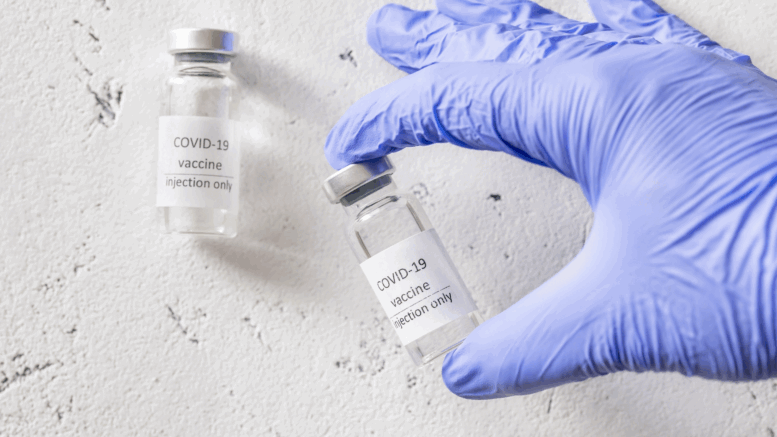Respiratory viruses are known for their ability to enter the body through the eyes, nose, or mouth. Our bodies know that, too. The nasal cavity is well-equipped with sticky mucus that traps pathogens and serves as an important site for immune cell surveillance and signaling. It may also be our best ally in the fight against SARS-Cov-2.
A new study by researchers in the UNC School of Medicine, including Meghan Rebuli, PhD, Ilona Jaspers, PhD, and Kevin T. Cao, lead author, has found that SARS-CoV-2 mRNA vaccination induces an immune response in the mucosal lining of the nasal cavity, offering new insights into potential vaccine strategies in the future.
“As SARS-CoV-2 variants continue to emerge and vaccine effectiveness wanes, we believe intranasal boosting following intramuscular priming may greatly reduce the risk of viral dissemination and infection, while also providing immunity against multiple variants,” said Rebuli, assistant professor in the UNC Department of Pediatrics and Center for Environmental Medicine, Asthma and Lung Biology.
Their results were published in The Journal of Allergy and Clinical Immunology: Global.
The mRNA vaccines use modified viral mRNA to teach our cells to recognize and trigger an immune response when SARS-CoV-2 invades our bodies through the nose or mouth. This immune response produces cells called antibodies that can neutralize or stop the virus from replicating.
At one point, the leading mRNA vaccines boasted >90% efficacy after three months, according to clinical trial data. Continued evolution of SARS-CoV-2, however, has improved its ability to evade the immune system and increased its transmissibility. This has left researchers with a need to continue exploring vaccination methods to better prevent infection and boost the immune response.
Intrigued by other research findings on mucosal immunity in the nasal cavity, Rebuli and colleagues wanted to know if antibody production induced by the mRNA vaccines resulted in antibody levels that promote neutralization of SARS-CoV-2 in the nasal cavities of vaccinated individuals.
To conduct their study, researchers collected blood and nasal epithelial lining fluid samples from healthy human volunteers. Participants in the study were sampled prior to vaccination, in between the first and second vaccination, and two weeks after receiving their second vaccination. The results were then compared based on vaccine status, sex, and vaccine brands.
First, they compared concentrations of two different antibodies, called IgA and IgG, before and after immunization. IgG is more often measured in the blood and IgA is more prevalent in the nasal mucosa, but both can be found in other mucosa throughout the body, including the gastrointestinal tract. IgA and IgG concentrations were greater in the post-vaccinated group in comparison to the pre-vaccinated group in both blood and nasal samples.
While the presence of antibodies in the nasal mucosa is promising, the detection alone did not confirm the function of the antibodies or neutralization of the virus. When viruses are neutralized, they can no longer infect the host. But the study team went on to find that the vaccine-induced antibodies within the nasal cavity were able to better neutralize the virus compared to antibodies that were in the blood.
Additionally, their results shined more light on the two subunits that make up the SARS-CoV-2 spike protein. Researchers were able to determine that IgG antibodies were more likely to bind to the S1 subunit, which is important for viral activation; whereas IgA antibodies may be drawn to the S2 subunit, which is important for viral entry into host cells.
As IgA demonstrated increased neutralization over IgG in the nose, this may suggest that to increase nasal mucosal levels of IgA and viral neutralization, future work on intranasal vaccines may benefit from targeting the S2 region.
“As the S2 subunit is a conserved region across SARS-CoV-2 variants, further understanding of this epitope may be vital in the development of vaccine induced cross-variant immunity,” said Cao, graduate student and lead author on the study.
With a better understanding of the virus-specific antibodies in the nose and their capacity to prevent infection, Rebuli and colleagues believe that this new data supports further development of vaccination strategies to more robustly protect individuals against infection.
Rebuli suggests that the solution may be an intranasal booster to enhance nasal mucosal antibodies in addition to the immune response brought on by the intramuscular mRNA vaccine.
“Overall, intranasal booster vaccination following intramuscular priming may contribute significantly to preventing respiratory infection by conferring mucosal immunity and neutralizing pathogens directly at the site of infection,” said Rebuli.
